Epoxy resin is a popular material for crafting and DIY projects, but it can be messy to work with. It can be a challenge to clean up after it's been used. Luckily, we've done research to compile a quick guide to cleaning up epoxy resin.
Epoxy resin is sticky and tends to drip, making it difficult to keep things clean. But, a little bit of care and attention can go a long way toward keeping your work area clean. Here are a few tips for cleaning up after epoxy resin:
- Wear Protective Gloves and a Mask
- Gather All Your Materials
- Prepare the Area With the Epoxy Resin Spill
- Scrape off the Resin
- Soak in Acetone
- Finish Cleaning up the Area
- Wash Hands and Tools
Keep reading to check this guide, as it will teach you how to clean up any messes made while working with epoxy resin. In this article, we'll demonstrate how to remove epoxy resin from your hands, tools, and work surfaces.
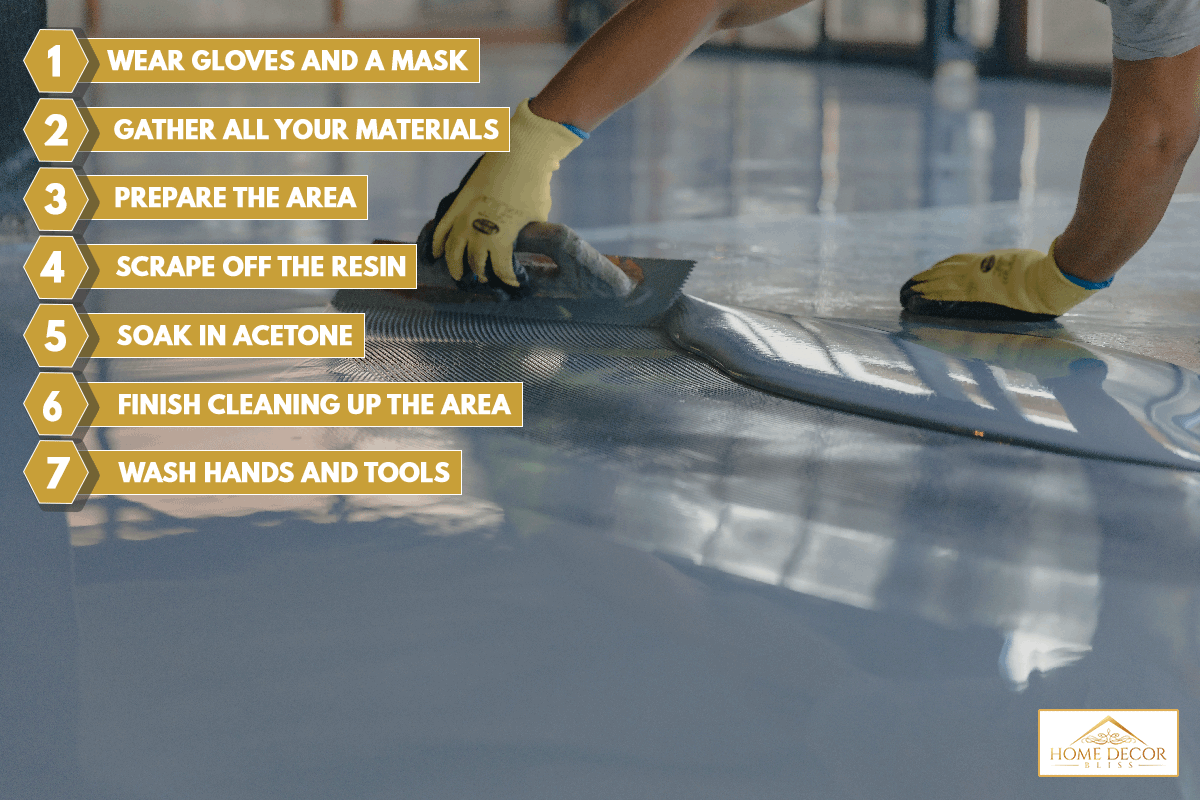
How Do You Clean Up Epoxy Resin?
Epoxy resin is a strong and durable material that can be used for a variety of applications, from coating countertops to creating jewelry. Yet still, it can also be difficult to clean up if you're not familiar with the proper techniques.
We sometimes add affiliate links and content that was curated and created by our team with the help of advanced ai tools to help showcase the best design styles.
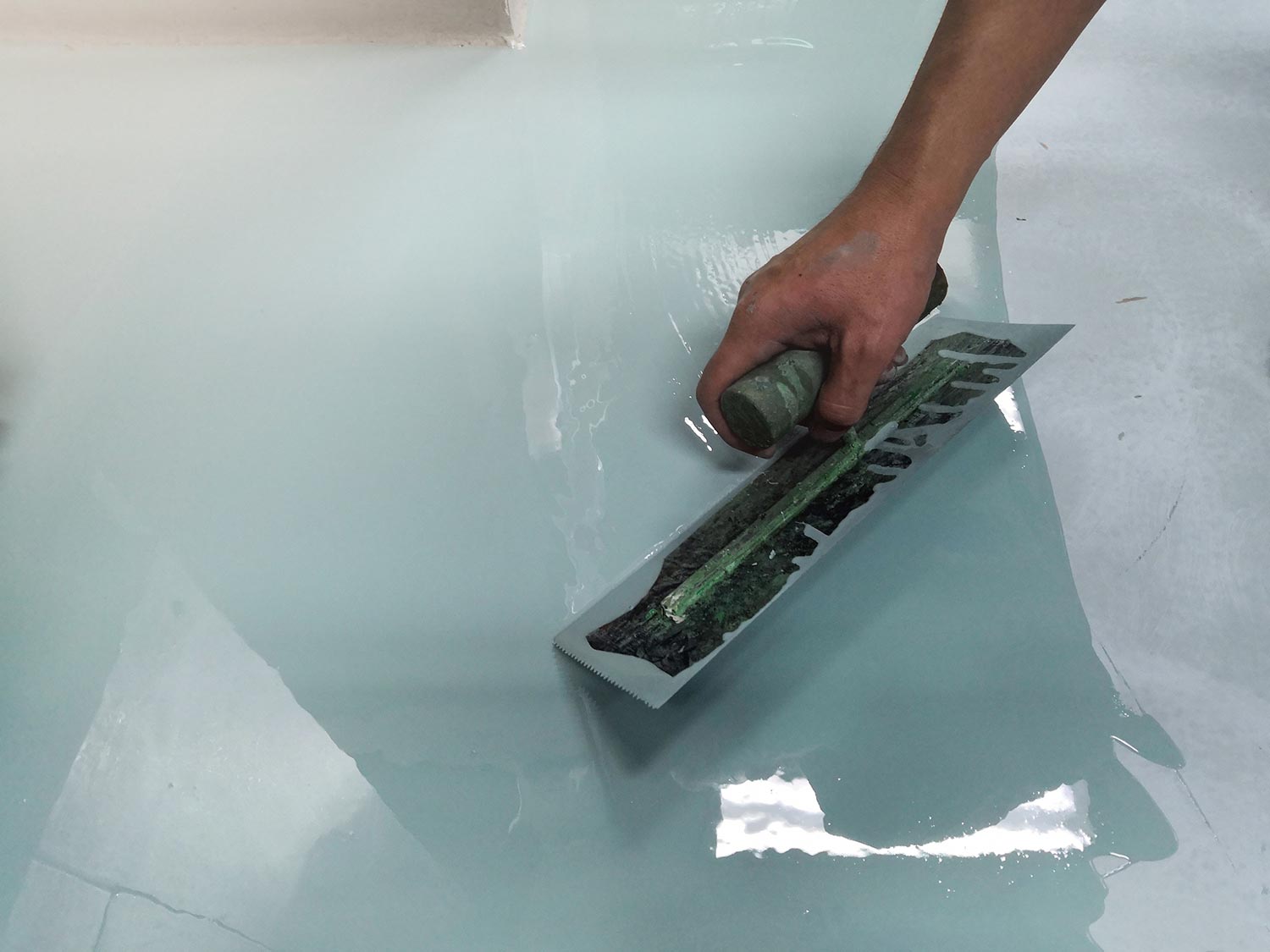
1. Wear Protective Gloves and a Mask
With the right precautions, you can keep your work area clean and safe. The first step is to wear protective gloves and a mask. This will protect your skin and lungs from the fumes and chemicals in the resin.
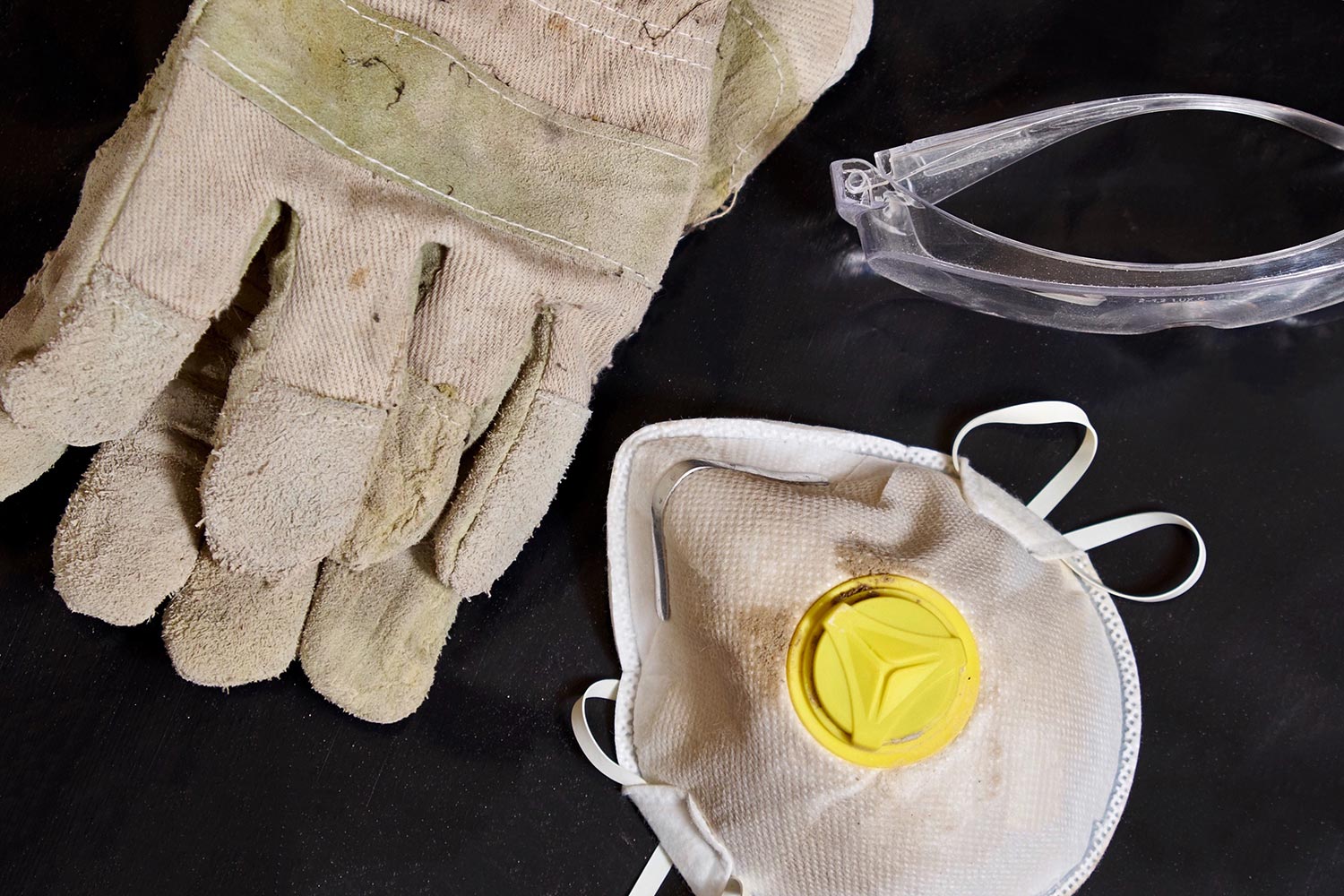
If necessary, you can also use a dust mask to avoid inhaling any fumes.
Get protective gloves on Amazon.
2. Gather All Your Materials
One of the most important things to have on hand is a good quality scraper. A putty knife or razor blade can work well for small spills, but a larger flat-blade scraper will make quick work of bigger messes.
You'll need a cleaner that is designed for epoxy resin, some rags, and a dustpan and brush.
Then, you'll need some type of solvent to dissolve the resin. Mineral spirits or acetone will work, but you may want to experiment with different products to find one that works best for you.
Once you have everything, you're ready to start cleaning up.
3. Prepare the Area With the Epoxy Resin Spill
The first step is to remove any larger pieces of resin with a dustpan and brush. Once you've gotten rid of the big pieces, you can start cleaning up the smaller bits of resin. Use a damp cloth or paper towel to pick up the resin.
Be sure to dispose of the cloth or paper towel in a sealed bag so that the resin doesn't spread. If there are any stubborn pieces of resin left behind, proceed to the next step.
4. Scrape off the Resin
The best way to remove epoxy resin from surfaces is to scrape it off with a putty knife or other sharp, blunt object. This will work for hardened epoxy resin, as well as wet or dried resin that hasn't yet hardened.
You may need to apply some pressure to get the resin to budge, but eventually, it should come up relatively easily.
5. Soak in Acetone
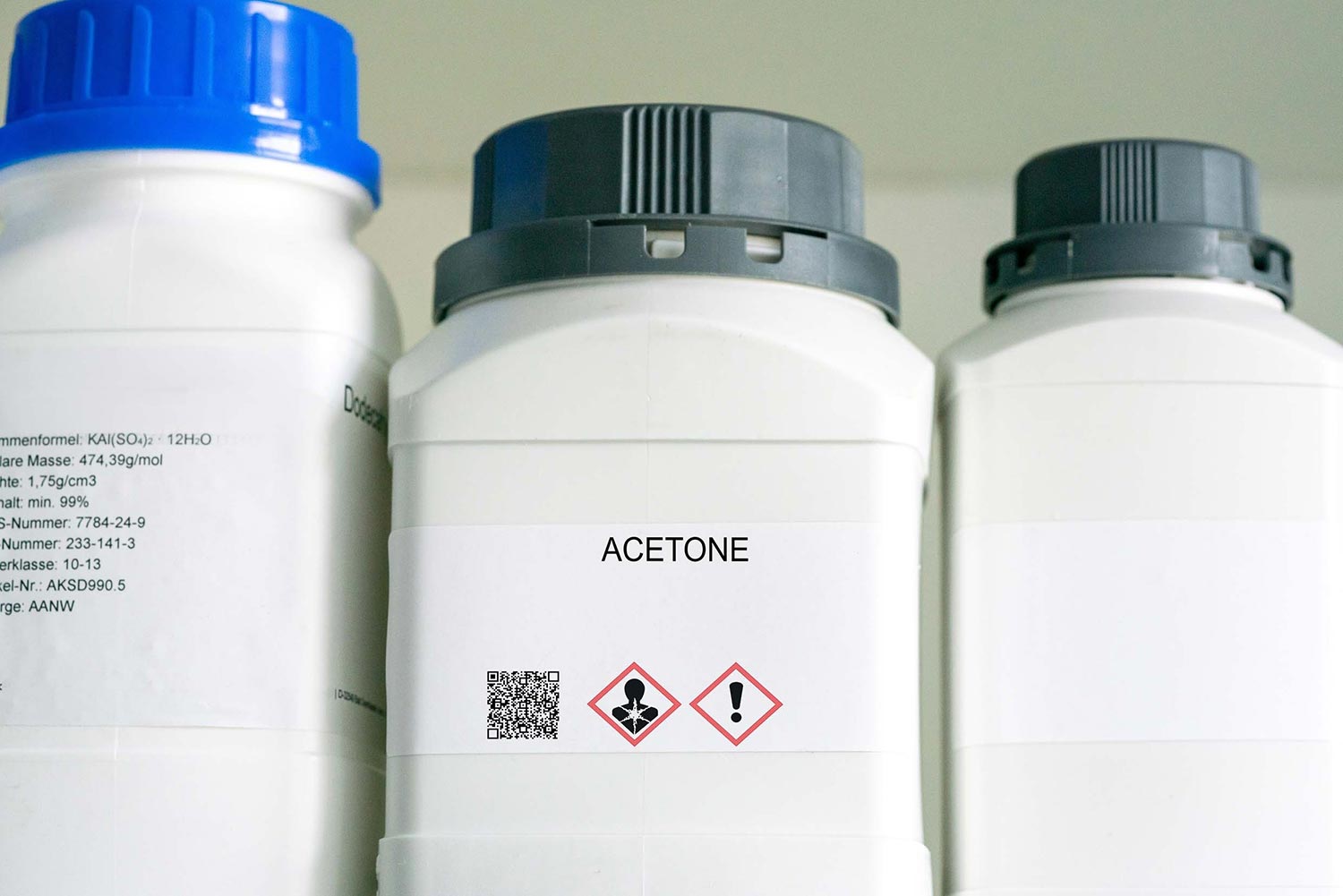
The best way to clean up epoxy resin is to soak it in acetone. Acetone is a powerful solvent that will dissolve the resin, making it easy to wipe away.
Simply apply acetone to a cloth and scrub at the resin until it dissolves. You may need to repeat this process several times to remove all the resin.
6. Finish Cleaning up the Area
Once the excess resin has been removed, you will need to clean up the area with soap and water. Be sure to remove all traces of soap before proceeding to the next step.
Some areas require you to sand it down in order to create a smooth surface. Start with coarse-grit sandpaper and work your way up to a finer grit. If necessary, you can use a primer and paint to cover up any imperfections.
7. Wash Hands and Tools
Finally, wash your hands and tools with soap and water to remove any traces of epoxy resin. With these simple steps, you can easily clean up after working with this versatile material.
How Do You Remove Cured Epoxy Resin From Surfaces?
Cured epoxy resin is an extremely tough and durable material that can be used for a variety of purposes, from crafts to engineering. Once it has been set, it can be difficult to remove. There are a few methods that can be used to remove cured epoxy resin, depending on the type of surface it is adhered to.
Hard Surfaces
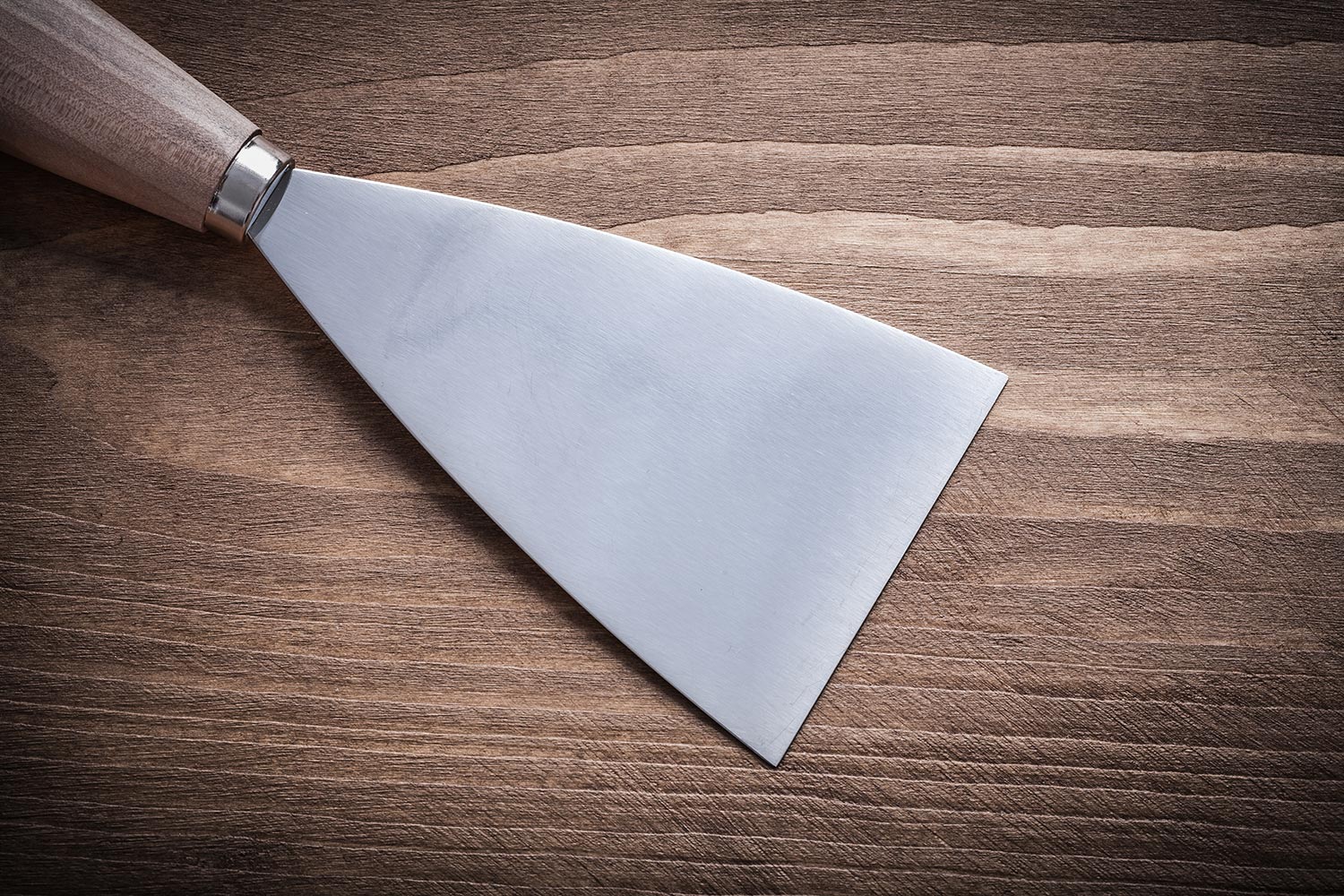
For hard surfaces like glass or metal, you can use a razor blade or putty knife to scrape it off.
Soft Surfaces
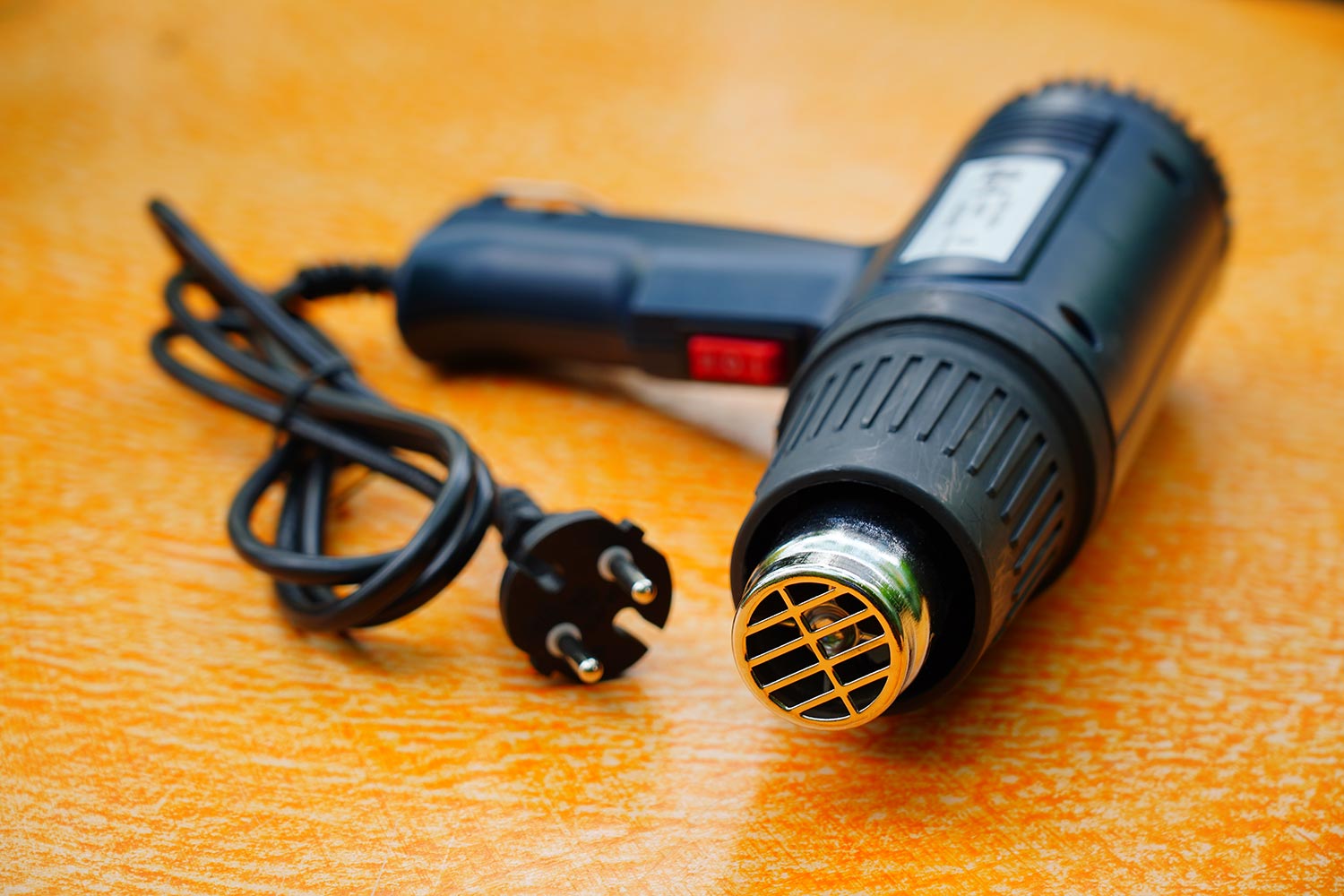
For softer surfaces like wood or plastic, you may need to use a heat gun or chemical solvent. With any of these methods, it is important to take care not to damage the underlying surface.
How Can You Get Rid of the Fumes From Epoxy Resin?
Epoxy resin is a strong, durable material that is often used in construction and other industrial applications. It can also produce harmful fumes that can be dangerous to inhale while cleaning it. There are a few ways to get rid of the fumes from epoxy resin.
- One way is to use a respirator or face mask. This will help to filter out the harmful particles from the air and protect your lungs from exposure.
- Another way to reduce the fumes is to work in a well-ventilated area. This will help to dilute the concentration of the fumes and make them less harmful.
- Finally, you can also use a fan to create a cross breeze, which will help to disperse the fumes more quickly.
By taking these precautions, you can help to protect yourself from the harmful effects of epoxy resin fumes while cleaning it.
How to Dispose of Epoxy Resin After Cleaning?
Most people are familiar with epoxy resin, a strong and durable material often used in construction and manufacturing. But, what many people don't know is that epoxy resin can be difficult to dispose of properly.
The material is not biodegradable, so it can't simply be thrown away in the trash. And because it's so strong and durable, it can't be melted down or recycled like other materials. So what's the best way to dispose of epoxy resin?
The best way to dispose of epoxy resin is to take it to a hazardous waste facility. These facilities are designed to safely dispose of materials that can't be thrown away in the landfill.
In this case, they will properly dispose epoxy resin of at a hazardous waste facility, and you won't have to worry about harming the environment.
How Do You Get Epoxy Resin off of Your Skin?
If you've ever worked with epoxy resin, you know it can be a sticky situation. The strong adhesive properties that make resin so useful can also make it difficult to remove from the skin.
- If you find yourself with resin on your hands, the best way to remove it is with water and soap. Simply wash your hands with warm water and gentle soap, and the resin should come right off.
- If soap and water aren't enough, you can try using vinegar. Apply vinegar to a cotton ball and rub it on the affected area. The acid in the vinegar will break down the resin, making it easier to remove.
- For stubborn resin, try using a citrus-based waterless hand cleaner. The citrus oil will dissolve the resin, making it easy to wipe away.
Whatever method you choose, removing epoxy resin from your skin is possible with a little elbow grease.
What to Do if You Accidentally Get Epoxy Resin in Your Eyes?
If you accidentally get epoxy resin in your eyes, it is important to act quickly. First, flush your eyes with cool water for at least 15 minutes. If the irritation persists, call a doctor or poison control center.
It is also a good idea to avoid rubbing your eyes, as this can further damage the delicate tissue. Epoxy resin can cause serious eye damage, so it is important to seek medical attention if you experience any pain, redness, or swelling.
By taking quick action and seeking medical help if necessary, you can help to prevent serious harm from epoxy resin exposure.
How To Prevent Spilling Epoxy Resin?
Before starting your project, it is important to understand how to prevent spilling epoxy resin. Here are a few tips to help you avoid making a mess:
- When measuring the epoxy resin, be accurate and use a measuring cup or syringe instead of estimating.
- Slowly pour the resin into your mold or onto your surface. If you pour too quickly, air bubbles can form and cause the resin to spill over the edges.
- If you are working with large amounts of resin, mix it in batches instead of trying to mix everything at once. This will help to prevent spills and waste.
- Have all of your supplies ready before beginning your project. This includes a mixing cup, stir sticks, gloves, and eye protection. Having everything organized ahead of time will help you work more efficiently and avoid spills
- If you do spill epoxy resin, try to clean it up immediately with the steps recommended earlier.
Final Words
In order to clean up epoxy resin, you will need a few supplies and some patience. The steps we’ve outlined earlier should help make the process a little less daunting. If you have any questions or run into any problems, don’t hesitate to reach out to experts in the field to help you clean up your epoxy resin mess.
For more details on keeping home safe, see our posts below:
Dyson Starts Then Stops—What To Do?



